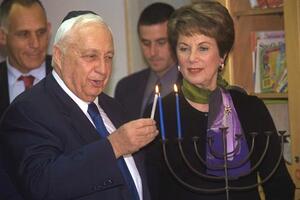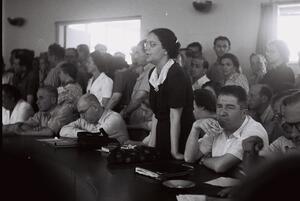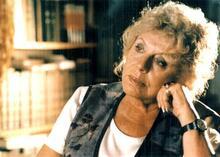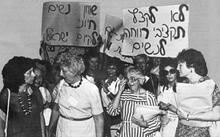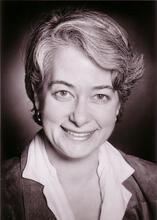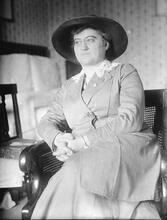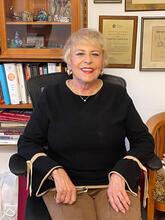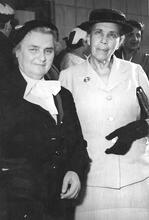Feminism in Contemporary Israel
Although Israeli feminism has its roots in the pre-state struggle for suffrage, the liberal movements of the 1960s in the Western world Israel largely untouched. The first Israeli radical women’s movement was established in 1972; the 1973 Yom Kippur War then created an awareness of the meaning of the gendered role division between men and women. Soon after the war, a choir of voices, organizations, and movements began to fight for feminist causes, and feminist organization intensified in the late 1970s. The main shift in the late 1970s and 1980s was the emergence of Mizrahi feminism, and since the late 1990s, schisms based on the politics of identity have divided the Israeli women’s movement. In the twenty-first century, the feminist landscape expanded, but the feminist field remains highly divided.
Feminism as a social movement is continually in motion, expanding feminist perspectives and horizons and struggling to implement old and new achievements simultaneously. Feminism grew out of unfulfilled liberal ideas, from the perceived male bias in the liberal-egalitarian discourse. That same critical thinking that brought forth feminism, and the reflexive logic that enabled criticism of the social forces that silence and exclude women, are also the sources for other voices. While it is often described in terms of “waves,” another theoretical perspective speaks of generational units that each carry multi-dimensional parallel feminist ideas and practices through past and present. The metaphor of a patchwork quilt is a good way to describe this multiplicity, and at the same time to dissolve the hierarchy of importance and the contributions of the various groups and organizations in creating contemporary Israeli feminism as an integral part of Israeli society.
Pre-State Feminism
As was the case across the world, Jewish women in the pre-state Jewish community in Palestine prior to the establishment of the State of Israel. "Old Yishuv" refers to the Jewish community prior to 1882; "New Yishuv" to that following 1882.Yishuv believed that achieving suffrage would bring equality. The early liberal feminist struggle reached its peak in the period 1919–1926 with the struggle to obtain the right to vote in Yishuv institutions (Shilo, 2013). Although women did achieve the right to vote, they lost their struggle against the institutionalization of the Chief Rabbinate as the only authority over personal status rights such as marriage and divorce. This failure resulted in the subordination of all women to religious patriarchal logic and denied them personal rights. Moreover, this development accentuated social boundaries between Jews and non- Jews in Israel, since Jewish religious laws do not allow for marriages to non-Jews. Concurrently, women of the left used socialist discourse in their efforts to enter the male world as equals, chiefly in the hakhsharot (pioneer training camps), in the “labor battalions,” on A voluntary collective community, mainly agricultural, in which there is no private wealth and which is responsible for all the needs of its members and their families.kibbutzim, and in political activity within workers parties, unions, and the Histadrut (Bernstein, 1987; Fogiel-Bijaoui, 1992b; D. N. Izraeli, 1981). At the same time, women also sought to preserve their distinctiveness as women and to gain civil equality in recognition of their unique contributions as women, mothers, and carriers of social welfare (Bernstein, 1992).
The 1960s
The liberal movements of the 1960s that washed over the Western world left Israel largely, though not completely, untouched. In the West, and especially in the United States, the decade was marked by student revolt, protests against the Vietnam War, and struggles against discrimination suffered by Blacks and women. In Israel, by contrast, a very different frame of mind prevailed. Caught up in the euphoria that followed victory in the 1967 Six-Day War, the country experienced a surge of national pride and deep admiration for the armed forces, accompanied by a belief, both explicit and implicit, that brute force constituted the way to resolve international problems.
Post-1967 Israel was preoccupied with the question of borders and territories. In a society where the military, and more particularly a fighting army, is the centerpiece of social identification, civil society and civil demands are often marginalized. Moreover, with the army as the fulcrum of the social ethos, the emphasis was naturally on men and on masculinity as the almost ultimate model of the “civilian” who participates in and contributes to the life of the community. The collective identification with the Six-Day War encompassed men and women alike.
The appointment of Golda Meir as Prime Minister in 1969, together with the economic boom that followed the 1967 war and enabled large numbers of women to enter the labor market, helped entrench the dominant myth of equality in Israeli society. Women were not aware that in practice they were channeled into “feminine” occupations and were secondary players in the work force. They did not internalize the fact that the majority of their social functions revolved around family and home-based activity. In post-1967 Israel, women constituted fewer than seven percent of the members of the Lit. "assembly." The 120-member parliament of the State of Israel. Knesset , and only four percent of local government representatives. They were almost completely absent from the decision-making level in the economic, political, and social spheres.
The 1970s
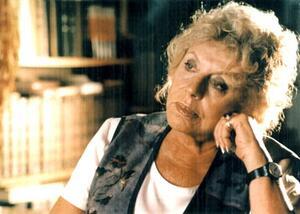
Passionate, principled, provocative, and above all path breaking, Shulamit Aloni (shown here in 2001) has dedicated her life to transforming Israel into an open, just and liberal society based on human dignity, tolerance for diversity and equality. Since the 1950s, she has been a major player in the struggle for progressive stances on human rights, civil rights, religious pluralism, the status of women and Israeli-Palestinian relations.
Photographer: Yizhak Elhadar, "Scoop 80"
Institution: Shulamit Aloni
During the late 1960s and the 1970s, protest movements swept the Western world. Voices of social protest against discrimination against the Lit. "Eastern." Jew from Arab or Muslim country.Mizrahi population in Israel were first heard in the early 1970s, with the emergence of the “Black Panther” movement, which demanded the re-allocation of economic and political resources and of social prestige.
In 1970, upon her return from the United States, Shulamit Aloni—founder of the Citizens’ Rights Movement—was the first to ask “Does Israel need a women’s rights movement?” In 1972, the first radical women’s movement was established (Freedman, 1990), and it was followed by diverse orgnaziations.
From its inception, the Israeli feminist movement encompassed parallel streams. These streams reflected differences among the three large cities in Israel. The Haifa stream was known as Nilahem—a Hebrew acronym standing for “Women for a Renewed Society” but also meaning “we will fight.” It is unsurprising that, in a society where the dominant discourse is military, the women who first challenged that dominance chose to call their movement by a name taken from the military lexicon, with the intention of transforming its meaning. The initiative for this movement came from two faculty members at the University of Haifa: Marcia Freedman, a philosopher (and later a Knesset member of Ratz party), and Marilyn Safir, a psychologist, both originally from the United States. They engendered a radical movement that was critical of the degree to which women were suppressed in a male-dominated society. At the same time, women in Jerusalem combined the feminist struggle with protests against poverty and the occupation of the West Bank. This movement’s bulletin, called For Liberation, emphasized a socialist perspective that combined class, national, and gender equality. In Tel Aviv, Esther Eillam, a leading feminist pioneer, constituted a movement in 1972 that connected women’s liberation to civil rights. Eillam would later continue to expand feminist perceptions and widen feminism’s spheres of activities (Eillam, 2012).
In many parts of Israeli society, the Yom Kippur War of 1973 constituted a watershed. For women, the war served as a kind of magnifying mirror that reflected with painful clarity Israel’s social structure and women’s place within it. The three weeks of hostilities before the cease-fire, together with the subsequent months of stepped-up mobilization of reservists, revealed the full intensity of the existing gendered role division and women’s marginality in the public sphere. The massive and swift mobilization of the country’s males when the war erupted brought civilian life to an almost complete standstill. Factories, businesses, offices, and schools closed down. Without men the national economy virtually ground to a halt. Public transportation was sparse: there were no women bus drivers. For the first time it was disclosed that neither of the two bus cooperatives that monopolize public transportation in Israel (Egged and Dan) allowed women to become members or employed women as drivers on a contract basis.
Thus in 1973, women were excluded from the three major aspects of the war effort: the military leadership, the civilian administration, and war production. Many women reported feeling helpless during the war. However, the anger and frustration were soon channeled into areas of activity considered legitimate for women: concern for the soldiers and helping to treat the wounded, the widows, and the orphans. Women baked and knitted for the men at the front, inundated the hospitals that cared for the wounded, and of course looked after family members who remained at home. The longer the hostilities persisted, the greater the number of caring and functional roles were added to female tasks.
As hostilities died down, the mobilized reservists began returning home. First to be released were those who held key positions in various sectors, in order to revitalize the civilian economy. Unlike World War II, which lasted for several years and in the aftermath of which many women entered the work force, in Israel the relatively short war of 1973 only intensified traditional divisions between men’s and women’s roles. However, the war did create awareness of what that role division meant for women and their place in society, as well as for society as a whole. The waste of human capital that occurs in a gender-stratified society was fully manifested in the three weeks of full hostilities.
The first body to react to the situation was the Israel Defense Forces (IDF). The process of self-criticism carried out by the military high command after the war, combined with the need to bolster combat units with males and the growing recourse to advanced technologies, led the army to reassess its policy toward women. The adoption of the new technologies, whose operation required trained and high-quality personnel, opened many new military fields to women and afforded them new opportunities. Women’s functions in the military became more diverse, a trend that has continued ever since. While the IDF always makes new missions available to female soldiers on the basis of need—generally in order to offset staffing shortages—at that time it did not pursue this policy with the goal of promoting gender equality.
Many women were actively involved in the large number of protest movements that sprang up in the wake of the Yom Kippur War. Nevertheless, the increasing attention paid to feminist concerns after the war was not a foregone conclusion. Two contradictory voices made themselves heard after the Yom Kippur War. One was trenchantly critical of the government and of the social order that had consolidated itself in Israel. But another—which became increasingly dominant—demanded national mobilization and the closing of ranks. The strength of this latter call made it difficult for the protest movements, and doubly so for women, to cut through to the political center. Besides, feminism as a social movement was received in Israel with profound reservations, as an American import and alien to the Israeli spirit. Worse, feminism’s demands were seen as a threat to the collective solidarity and to women’s readiness to accept the dominant national agenda, which revolved around the security discourse and the centrality of the Arab-Israeli conflict.
However, precisely because the gendered role division had reached an unprecedented level during the war, the seeds of the feminist approach, sown before the war, were able to flourish thereafter. The offspring, although initially small, proved sturdy.
Politically, this promise was first seen in the success of Ratz, the Citizens’ Rights Movement (CRM), in the elections to the eighth Knesset held on December 31, 1973, soon after the formal conclusion of the Yom Kippur War. (The elections had originally been scheduled to take place on October 30.) Ratz, formed by Shulamit Aloni, was the first party to espouse human rights, civil rights, and women’s rights as policy guidelines. Marcia Freedman, a declared feminist, held the third place on the Ratz list. The public protest against the blunders associated with the war, together undoubtedly with the frustration generated among women by the status to which they had been relegated during the hostilities, translated into votes, and Ratz won four seats.
Ratz was the first Israeli political party to indicate the connection between the dominance of the security discourse and the inequality of women. Ratz placed the issue of women’s rights and women’s status in the family and in society—and not just in legislation relating to marriage and divorce—on the national agenda. In the eighth Knesset, the conspiracy of silence about violence against women in the family was broken; for the first time the subject of battered women was discussed. During this period, Ruth Resnick, a member of Ratz and a feminist, established the first shelter for battered women. The issue of abortion was also dealt with extensively and the feminist argument relating to a woman’s right to her body was voiced. Admittedly, the Knesset did not enact legislation to legalize abortions. But the mandates of the official committees it formed were sufficiently broad to include, for instance, the “social clause”—which defined the social and economic conditions in which women lived as legitimate considerations in decisions on whether to permit abortions.
The press and the official Knesset Record from this period reveal that neither the legislature nor the public was sympathetic to or enthusiastic about these new themes on the political agenda. Nevertheless, they could no longer be ignored. This was amply demonstrated in 1975, designated International Year of the Woman, when then-Prime Minister Yizhak Rabin appointed a commission to examine the status of women in Israel. It took the commission some time to complete its research and to prepare its report, which in fact was not submitted until 1978—to a new prime minister, Menahem Begin. The report examined the place of women under the law and in education, the military, the labor market, the family, and decision-making centers, and it investigated the plight of women in distress. The findings revealed for the first time the scale of the inequality between the genders and opened the eyes of many women (and men). Appended to the report was a booklet containing 241 recommendations for action required to promote the status of women and bring about equality between the genders in Israel. Women’s marital status was the only issue on which the commission could not reach unanimity, due to the lack of separation between state and religion, as well as to the dominance of Orthodox Judaism.
The importance of the report drawn up by the Commission on the Status of Women lay not only in its recommendations, but also in the opportunity it provided for women from different spheres to work together. Approximately one hundred women participated in the commission, and it constituted the first encounter between women politicians and women academics. Participating in the plenary and in the sessions of the sub-committees served as a means of consciousness-raising. The work invested by all those involved in preparing the commission’s report clearly constituted a formative experience for a new generation of feminist leadership.
One of the few resulting political achievements of the Commission was the creation of the position of Advisor to the Prime Minister on the Status of Women. During the following decade, only forty-one of the commission’s recommendations were implemented. Nevertheless, the report of the Commission on the Status of Women was a breakthrough. Even though some years would elapse before its implementation began, and women’s organizations still battle for its full implementation, the report serves as a symbolic document of Israeli society’s commitment to making changes in women’s status.
The Late 1970s and the 1980s
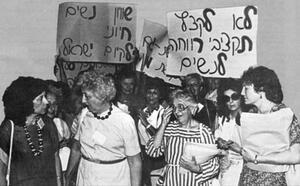
Courtesy of a private collection.
Feminist organizing in Israel intensified beginning in the late 1970s, as seen in various forms of social-feminist endeavors: feminist writing, translations of leading international feminist articles, texts written locally, and a feminist journal, Noga. Shelters for battered women and rape crisis centers were established, and women set up a variety of mutual support groups. A women’s party was founded in 1977; although it did not attain the minimum percentage of votes required to take part in the Knesset, it was clearly another milestone in the feminist fight.
The chief characteristics of this burst of organizing were conscious defiance, grassroots initiatives, and the absence of direct dependence on parties or institutionalized political parties. Many organizations, perceived at that time as radical, highlighted a single issue, breaking the silence around such topics as violence against women, rape, abortion, lesbian rights, and offensive advertising (Fogiel-Bijaoui, 1992a). Although most of these organizations were small and marginal, the merging of their voices greatly changed the public climate on the issue of women’s status.
Alongside the radical feminist organizations that emphasized liberation from patriarchy, from men’s superiority, and from existing social norms and institutions, “welfare” feminism that focused on serving women in hardship expanded feminist activity within the then-giving social structures. Paradoxically, returning to women’s traditional role as caregivers paved the way for cooperation among various liberal feminists. It also paved the way for Jewish women’s organizations (such US/Israel and Women to Women) to provide philanthropic support for feminist activities in Israel (Safran, 2002). The Israel Women’s Network, established in 1984, defined its main mission as advocacy work with Knesset members, decision-makers, and policy-setters. Most of its founders came from academia. Their entry into feminist activities constituted more than crossing the line separating the academy from politics, for they eventually established women’s studies programs in Israel’s universities and colleges, thereby helping to expose the gendered-political aspects of academic discourse (Shalvi, 2006).
Liberal feminist ideas penetrated veteran women’s organizations that interpreted the concept “feminism” as less and less threatening. Thus, Na’amat, WIZO, and even the religious Zionist women’s organization Emunah embarked on consciously feminist activities and consciousness-raising through training, journalism, and political efforts. They also displayed greater willingness than before to collaborate with other organizations on specific issues, such as those relating to women’s status in the rabbinical courts.
However, the main shift in the late 1970s and 1980s was the emergence of Mizrahi feminism. Combining educational activity in socially peripheral areas, ethno-class struggles, and feminism, Tikva Levy—who chaired Hila, an educational organization, from 1987 until her death in 2012—saw the role of this educational organization as developing critical ethnic and feminist consciousness among Mizrahi communities. She believed in social movements that combine self-help, protest, and a change of identity from victim to political agent (Openheimer 2012). She was one of the pioneers who challenged the dominant liberal perspective in the early stages of Israeli feminism. Although the first feminist conferences began in the mid-1980s, only since the early 1990s has the feminist agenda included the issue of representing a variety of groups and identities.
The 1990s
During the 1990s, both old and new feminist organizations had meaningful impacts both at the political level and in civil society. In 1992, during the thirteenth Knesset, an ad-hoc Committee on the Status of Women was established; it became a statutory committee in 1996. In comparison to its predecessors, this Knesset was more “woman-friendly.” The majority of the women MKs were members of the Israel Women’s Network and defined themselves explicitly as feminists who wished to cross the lines of party, ethnicity, age, and religion. It constituted a successful attempt by women politicians to go beyond party squabbles and to cooperate on shared issues impacting the status of women.
The committee chalked up more than a few achievements. Some involved setting up frameworks dedicated to dealing with women’s status, including the establishment of the Authority for the Advancement of the Status of Women, which originally was part of the Prime Minister’s Office and became part of the Ministry for Social Equality in 2009. Originally its purpose was to advance the status of women and coordinate between governmental and non-governmental bodies acting to promote the status of women. During the 1990s this cooperation led to legislative initiatives, adding to the agenda of the Knesset and of the public topics such as educating for gender equality, fighting offensive advertising, single families, LGBTQ rights, women in sport, prevention of sexual harassment, police attitudes toward victims of rape and violence, the status of Arab women, and the Basic Law-Rights of Women. The topics discussed by the committee indicate an attempt to address the needs of different groups of women, as well as widening public debate about people suffering because of their sex. The committee thus made a significant contribution to institutionalizing a feminist agenda.
A pivotal case of cooperation between various feminist social agents involved Alice Miller’s 1994 application to the High Court of Justice for the right to apply for the prestigious military pilot’s course, considered a combat course closed to women. Miller’s struggle was supported by the Women’s Lobby, the Association for Civil Rights, and then–Member of Knesset Naomi Chazan. In the wake of the court ruling in Miller’s favor, the Security Service Act was amended in 2000 to say that women had the same rights as men to serve in any position, and the army was forced to open all its ranks to women. Nevertheless, the issue of women’s service in the military and its role in de/gendering the military and Israeli society is still hotly debated by Israeli feminists (D. N. Izraeli, 1997; Sasson-Levy, 2011; Herzog, 2019; Harel-Shalev and Daphna-Tekoah, 2019).
Since the 1990s the most significant characteristic of the Israeli feminist movement has been that radical grassroots organizations consistently raise new issues, which are then gradually adopted by larger, more established organizations. The former, and their leaders, remain permanently at the margins as a kind of eternal avant-garde, constantly initiating new ideas that a priori are considered radical and impossible but that over time are adopted by established women’s organizations and, to some extent, eventually institutionalized, enter the public agenda, and lead to activity in the Knesset. Notable examples are the issues of domestic violence, sexual harassment, and rape.
Since the end of 1990s, schisms based on the politics of identity have divided the Israeli women’s movement (Dahan-Kalev 2001). Yet, the logic of feminism rules out delegitimizing any of this choir of voices. If gender is a result of power-oriented social construction, then any idea of a single, all-inclusive group that includes all women has been negated in light of the need to keep feminist discourse open and constantly changing. One solution to divisions within feminism is to cooperate around agreement on particular issues. For example, the Israel Women’s Network does not deal with political issues that relate to the Arab-Israeli conflict; Women in Black agreed on a single slogan and refused to debate any feminist issues other than calls to “End the Occupation” (Helman & Rapoport, 1997). Attempts have also been made to set up ad-hoc coalitions, such as ICAR, the International Coalition of Agunah Rights, which deals with the issue of agunot and recalcitrant husbands who refuse to grant their wives a divorce.
The 1990s also saw the further institutionalization of women and gender studies programs in the leading universities, and later in various colleges and even courses in high schools, as well as the establishment of the Israel Association for Feminist and Gender Studies.
The 2000s
At the turn of the twenty-first century, the Janus face of feminism intensified. On the one hand, the feminist landscape continually expanded, with new social actors, new ideas, new organized groups, and new ways of collaboration. On the other hand, led by a logic of a zero-sum game, the feminist field is highly divided due to competition over economic resources and symbolic recognition. The multi-vocal feminist movement has clearly become an influential social force that continually alters civil society and the public agenda, thus extending the borders of politics. Based on intersectional feminism, in Kimberlé Crenshaw’s terms, new feminist perspectives are developing, highlighting gender inequalities and voicing experiences that intersect with other forms of oppression. Such perspectives include the Mizrahi, Orthodox, Haredi, Muslim, Palestinian, Ethiopian, and LGBTQ communities. The dilemma btween unversal femninism and particular identities is highlly debated (Halprein-Kaddari and Yadgar 2010).
This growing fragmentation intersects with NGO-organizing practices that reaffirm the principles of neoliberal discourse and property owners, who act to advance their own interests. At the same time, numerous ad hoc coalitions flourished between various organizations focused on women’s issues and rights, such as violence against women and murder of women. During the Covid pandemic, moreover, over 70 Jewish and Arab women from a variety of organizations took part in ad-hoc collaboration.
The 2000s also saw the emergence of numerous feminist websites and chat groups with multi-vocal perceptions of feminisms. The feminist voice continues to grow ever more diverse, presenting a lively force for potential social change. At the same time, it should be noted that the acceleration of neo-liberalization and the reinforcement of systems of power have perpetuated unequal distribution of wealth, resources, and personal security and thus reinforced social exclusion and polarization in society in general and among women in particular (see She Knows, https://www.yodaat.org/). Moreover, the individual rights approach transfers state responsibility to the individual, and thus justifies the state’s withdrawal from its obligations in the domains of welfare and social and economic justice. The escalation of neoliberal trends converts gender inequality from a structural problem into an individual affair. Contemporary convergence between neoliberalism and feminism involves the production of a new kind of feminism (Rottenberg, 2014). Using liberal terminology such as equality, opportunity, and free choice, the new feminist subjects accept full responsibility for women’s own well-being and self-care, based on creative personal initiative, innovation, and calculation in crafting a balance between work and family, thus reframing the question of social justice in personal, individualized terms.
A Choir of Voices
It should be noted that the most significant phenomenon in the community of feminist organizations in Israel is that radical grassroots organizations raise new issues that are gradually adopted by the large organizations. In consequence, the former, and their leaders, remain permanently at the margins as a kind of eternal avant-garde, constantly initiating new ideas that a priori are considered radical and impossible. Over time, the issues they raise are adopted by establishment women organizations and, to some extent, are eventually institutionalized, enter the public agenda, and lead to activity in the Knesset. Notable examples are the issues of domestic violence, sexual harassment, and rape. Thus, the boundaries between the extra-establishment feminist discourse and the political discourse are no longer impermeable.
Since the late 1970s, but more emphatically in the last decade of the twentieth century, there has been an outburst of voices: secular and religious women, Lit. "Eastern." Jew from Arab or Muslim country.Mizrahi women, Palestinian women living in Israel, lesbians, single mothers, mothers of soldiers, Women in Black, Women in Green, women with political views from the right and left, liberal, Marxist, and radical feminists, as well as women who consider gender as an essentialist social category, and those who see it as constituted by social process and thus capable of reinterpretation and change. All these voices are involved in the public political discourse, some loudly raised, some whispering, and others in deafening silence.
The logic of feminist thinking rules out delegitimizing any one of this choir of voices. If gender is a result of power-oriented social construction, then any idea of a single, all-inclusive gendered identity must have a coercive element. Attempts to describe this identity and to act in its name, are power-driven, normalizing, and exclusionary endeavors. Feminism’s attempts to speak in the name of “The Group” have been negated in light of the demand to keep feminist discourse open and constantly changing. Implementing such an idea in the political arena is highly problematic. A political movement must have a group identity in order to mobilize political power; in the absence of consensus over a common identity, it is almost impossible to generate political mobilizing. Hence, feminist politics in Israel, as in many other places, is divided and there are more than a few disagreements between the feminist organizations. One solution is to conduct politics of identities, attempting to bridge or, more correctly, to neutralize disagreements extending beyond the agreed issue. Examples may be found in the modus operandi of the Israel Women’s Network, or that of Women in Black who agreed on a single slogan, refusing to debate on other feminist issues apart from that of “End the Occupation” (Helman & Rapoport, 1997), or other attempts to set up an ad-hoc coalition (like ICAR [International Coalition of Woman who cannot remarry, either because her husband cannot or will not give her a divorce (get) or because, in his absence, it is unknown whether he is still alive.Agunah Rights], which deals with the issue of agunot and recalcitrant husbands who refuse to grant their wives a divorce).
The feminist voice is growing ever more diverse, preventing the formation of a uniform feminist identity that can unite women around it and crystallize into a single political force. The multi-vocal non-unified participation of feminist organizations in the formal institutionalized political arena leaves the feminist women’s organizations outside the power foci of decision-makers, but they have clearly become an influential social force that must be reckoned with. Obviously, this is the achievement of a “movement,” though not a movement that wins seats in the Knesset. It is a movement that aims to change the public agenda and, in this sense, as well as being a political force, it is extending the borders of politics.
Bernstein, D. S. “The Women's Workers Movement in Pre-State Israel.” Signs: Journal of Women in Culture and Society, 12, 3 (1987):, 454-470.
Bernstein, D. S. Pioneers and Homemakers: Jewish Women in Prestate Israeli Society. Albany, NY: State University of New York, 1992.
Dahan-Kalev, H. “Tensions in Israeli Feminism: The Mizrahi Ashkenazi Rift.” Women’s Studies International Forum, 24 (2001): 1-16.
Eillam, E. “A Feminist in Academe in the 1970s.” Migdar: A Journal of Gender and Feminism, 1,1 (2012): 117-132 (in Hebrew).
Fogiel-Bijaoui, S. “Feminine Organizations in Israel - Current Situation.” International Problems, Society and Politics, 31 (1992): 65-76 (in Hebrew).
Fogiel-Bijaoui, S. “On the way to equality? The struggle for women's suffrage in the Jewish Yishuv: 1917-1926.” In Pioneer and Homemakers, edited by D.S. Bernstein, 261-282. Albany, NY: State University of New York, 1992.
Freedman, M. Exile in the Promised Land. Ithaca, NY: Firebrand Books, 1990.
Halperin-Kaddari, R., & Yadgar, Y. “Between universal feminism and particular nationalism: politics, religion and gender (in) equality in Israel.” Third World Quarterly, 31, 6 (2010): 905-920.
Harel-Shalev, A., & Daphna-Tekoah, S. Breaking the Binaries in Security Studies: A Gendered Analysis of Women in Combat. Oxford: Oxford University Press, 2019.
Helman, S., & Rapoport, T. “Women in Black: Challenging Israel's Gender and Socio-Political Orders.” British Journal of Sociology, 48, 4 (1997): 682-700.
Herzog, H. “Redefining political spaces: a gender perspective on the
Yishuv historiography.” Journal of Israeli History: Politics, Society, Culture, 21 (2002): 1-25.
Herzog, H. “Are Women Really Equal in the People’s Army? A Gender Perspective on the Israel Defence Forces (IDF).” In Women and Gender in Military Affairs: An International Comparison, edited by Robert Egnell and Mayesha Alam, 153-172. Washington, DC: Georgetown University Press, 2019.
Izraeli, D., Friedman, A., Dahan-Kalev, H., Fogiel-Bijoui, S., Herzog, H., Hasan, M., & Naveh, H. Sex Gender Politics: Women in Israel. Tel Aviv: Hakibbutz Hameuchad, 1999 (in Hebrew).
Izraeli, D. N. “The Zionist Women's Movement in Palestine, 1911-1927: A Sociological Analysis.” Signs: Journal of Women in Culture and Society, 7, 1 (1981): 87-114.
Izraeli, D. N. “Gendering Military Service in Israeli Defense Forces.” Israel Social Science Research, 12, 1 (1997): 129-166.
Openheimer , V. “Life full of hope: in memory of Tikva Levy (1960-2012).”
Migdar: A Journal of Gender and Feminism, 1 (2012): 145-148 (in Hebrew).
Rottenberg, Catherine. "The rise of neoliberal feminism." Cultural studies 28, 3 (2014): 418-37.
Safran, H. "One day One day will understand that we are right." Panim: Journal for Culture, Society and Education 22 (2002) (in Hebrew).
Sasson-Levy, O. “Research on Gender and the Military in Israel: From a Gendered Organization to Inequality Regimes.” Israel Studies Review, 26, 2 (2011): 73-98.
Shalvi, A. “Israel Women’s Network.” Jewish Women: A Comprehensive Historical Encyclopedia. Jerusalem: Shalvi Publishing Ltd.
Shilo, Margalit. Zionist Women's Struggle for Suffrage in Mandatory Palestine 1917-1926. Jerusalem: Ben- Gurion University of the Negev, The Ben-Gurion Research Institute for the Study of Israel and Zionism and Yad Ben-Zvi, 2013 (in Hebrew).
Yodat–She knows: -Israel's Gender Knowledge Center https://yodaat.org/en/

